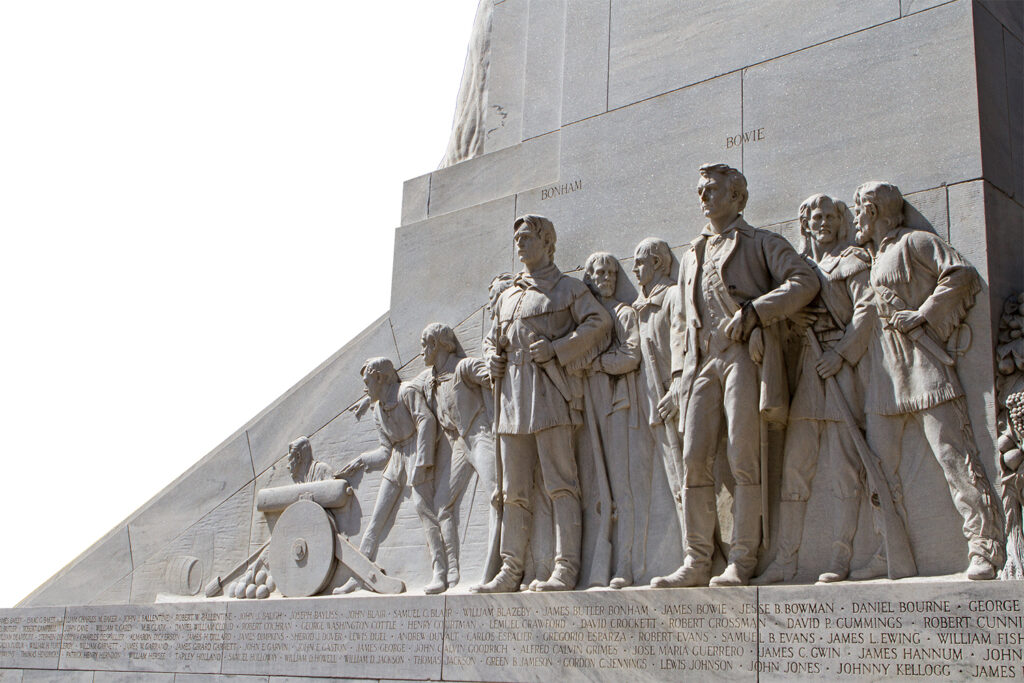While it is famous for many things, you can ask strangers nearly anywhere in the world what they know of Texas, they are likely to answer, “Remember the Alamo.” With the greatest respect, and unlike much of American history, the story of the Alamo is retold from the perspective of the side that lost. The 1836 Battle of the Alamo is one of the most pivotal battles in world history; manifesting Texan identity, the fight for freedom, and courage against impossible odds. Some say it is a modern version of King Leonidas and his Spartans; the valiant stand that made people like Sam Bowie and Davy Crockett more famous than the army that won.
March 6, 2020 is the 184th anniversary of the last battle of the alamo.
The stories of the men who died there made the Alamo a cultural phenomenon of the United States, and specifically, Texas. If you believe the American Revolution was the creation of the United States, the Battle of the Alamo is the creation story of Texas. Some 250 men demonstrated true patriotism, and their stories continue to capture the imaginations of people around the world.
Since you live in Texas, it is important to know those stories of bravery and honor, all of which helped established Texas as an independent republic, and played a big part in the character of the state and its people. Fortunately for us, San Antonio is just under two hours away by car, and the March event calendar at the Alamo is full of special and educational events for the annual remembrance of its final battle.
ON THE GROUNDS
The Alamo is much more than the iconic stone wall seen so often in literature and media. Many visitors are surprised, at first glance, at the small size of the church facade that, culturally, represents a military garrison. It gives one a truer sense of the resolve it must have taken to stay and fight when 2,000 Mexican soldiers were trying very hard to get in. Still, the original footprint of the mission was much larger and only the original church and barracks still stand.
That doesn’t mean there isn’t plenty to see. The grounds today include a plaza and courtyards with re-enactment sites, amphitheater, exhibits, movie theater, artifact displays, and gift shop.
TOURS
March is a great time to visit. Experts recommend planning any visit between October and April, when the weather is comfortable, and when fewer of the 2.5 million annual visitors are likely to be there. Alamo staff say, while it is never empty, visiting on weekends during off-peak months means shorter wait times. Weekdays are always a good idea, but plan to visit very early or very late to avoid the biggest crowds during Spring Break week.
Visiting the grounds and the church is free to the public. Daily programs include free and family-friendly activities, but they do recommend either a 45-minute audio ($7) or 60-minute guided tour ($15) for the best educational experience. For younger visitors, there is a “Young Texans Tour”, which lasts 45 minutes.
The San Antonio Visitors Bureau suggests planning a guided tour and one to two hours to visit all the nearby sites in the plaza (right) and surrounding area.
Exhibits
In addition to daily tours, there are special exhibits. The original well and barracks are part of the free activities, as is a short film that highlights the history leading up to the 1836 battle.
One staff member recommendation as a “don’t miss” is the Living History exhibit in the rear of the grounds. “Many people come here, take a selfie out front and see the grounds. But you don’t want to miss live re-enactors talk about medicine, food, guns and other lifestyle elements of the period. It makes the history real.”
He also says, regardless of your plans, save the date for the newest museum on the grounds. Pop culture fans know singer-songwriter Phil Collins is a lifelong Alamo enthusiast. He donated his personal collection, which has thousands of never-before-seen artifacts, in 2014; doors are scheduled to open in 2024.
Things to See Outside
Alamo Walls: There are markings in some places on Alamo Plaza that denote where walls would have been in front of the church. There is also a burial site.
Commerce Street: Along Commerce Street there are plaques located near where it is believed the bodies of some of the defenders were burned on funeral pyres after the battle. There is also a plaque at the location of the former footbridge that was in use during the Battle of the Alamo.
Ashes of the Alamo Dead: Inside the San Fernando Cathedral there is a marble coffin. It allegedly includes the ashes of some of the defenders of the Battle of the Alamo, including Bowie, Crockett, and Travis. There is still much debate about where the remains were buried.
Original Sites for the San Antonio de Valero mission: The Spanish mission was moved at least twice before it ended up at its present site. Experts have a broad sense of where these would have been; the exact locations are unknown. However, both the Chapel of Miracles and San Francesco Di Paola Church are possible sites near which the original mission may have sat in 1718. The second location in 1719 may have been in La Villita or where St. Joseph’s Catholic Church now stands.

Alamo Cenotaph (pictured): The Spirit of Sacrifice, just outside of the Alamo, includes a list of names of most of the people who fought in the Battle of the Alamo on the Texian side.
